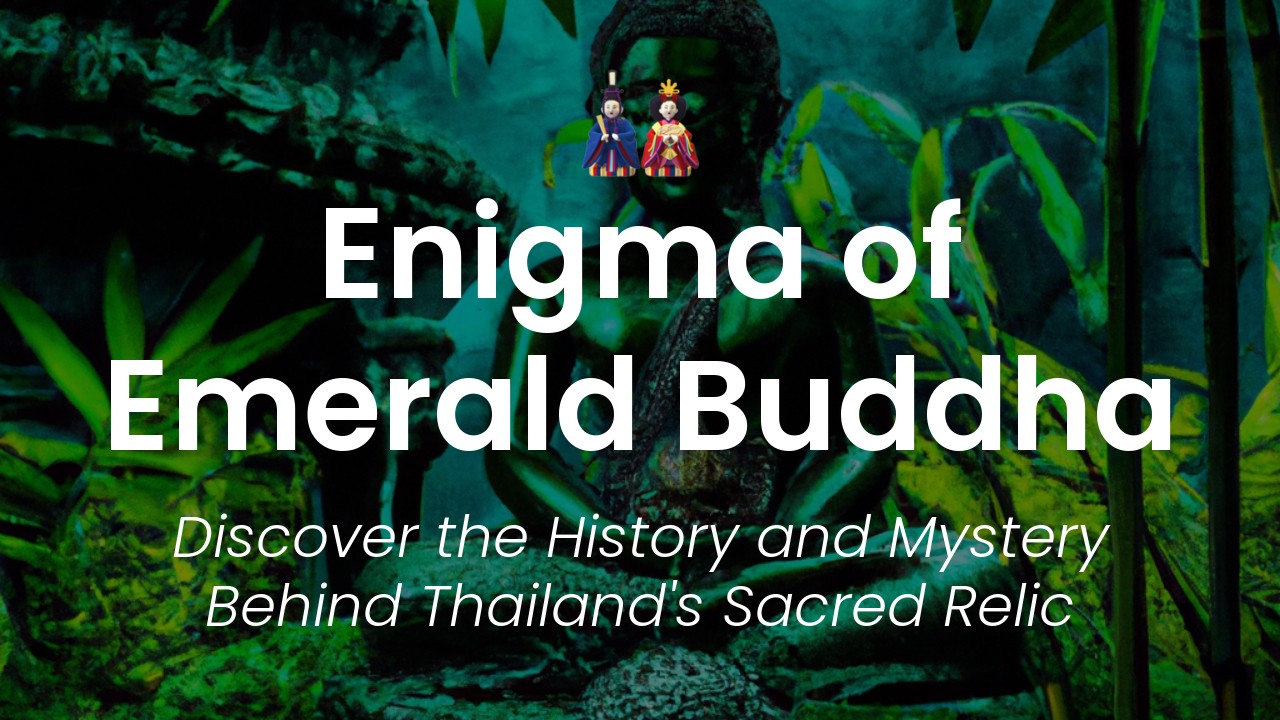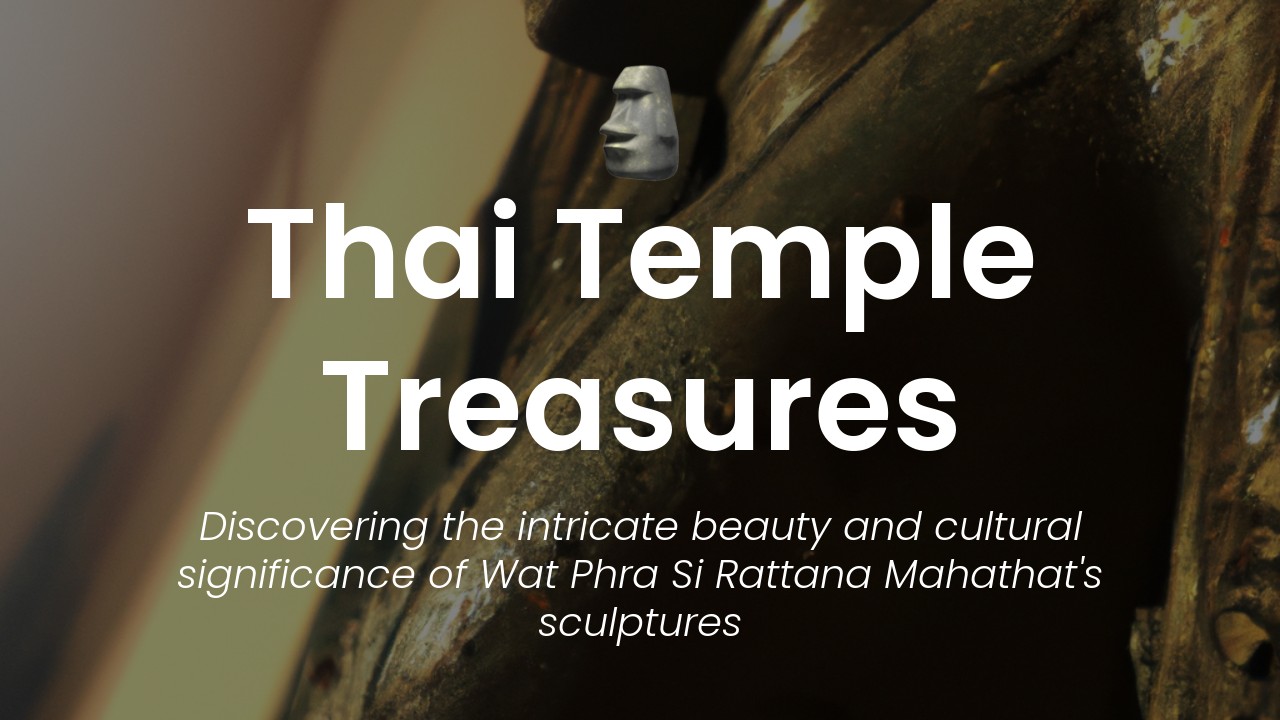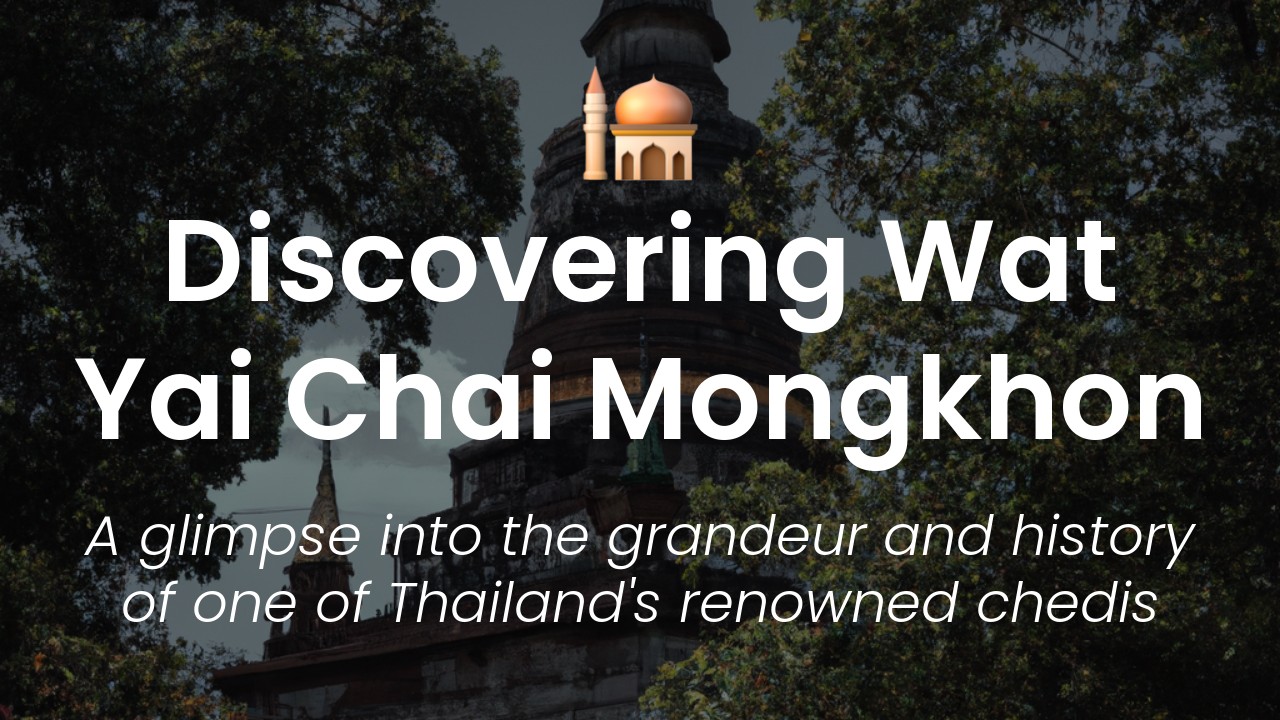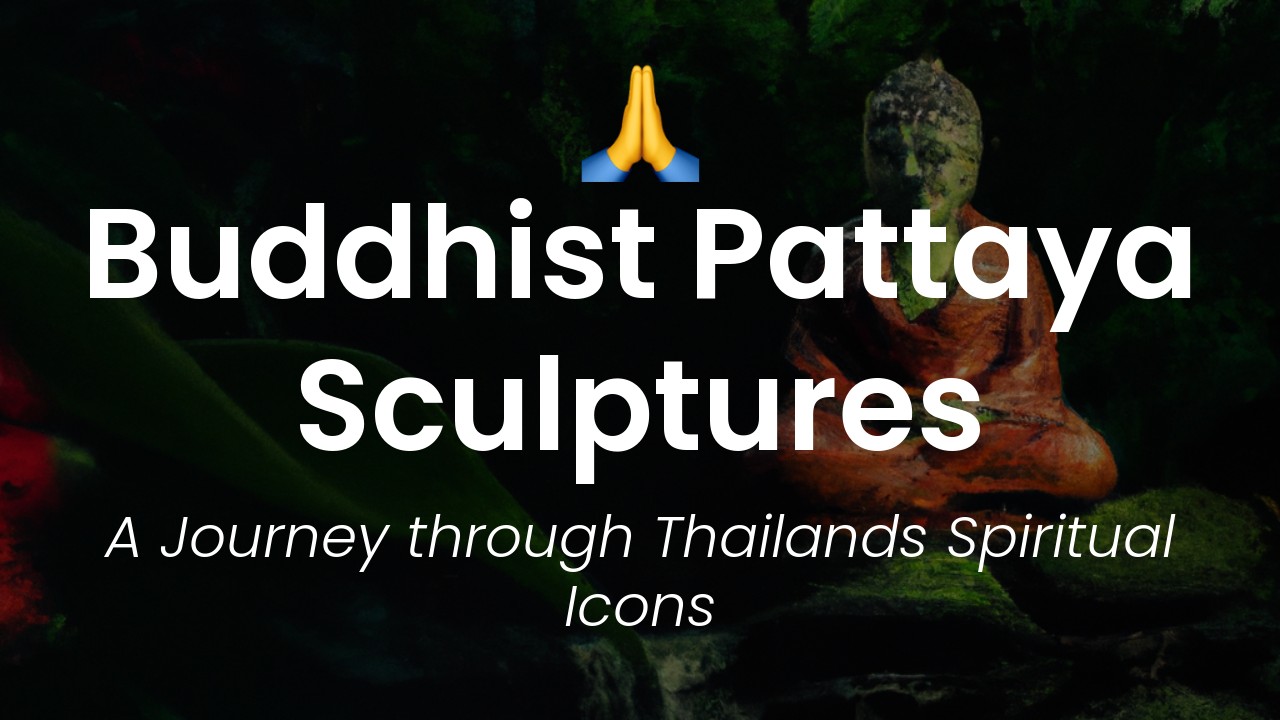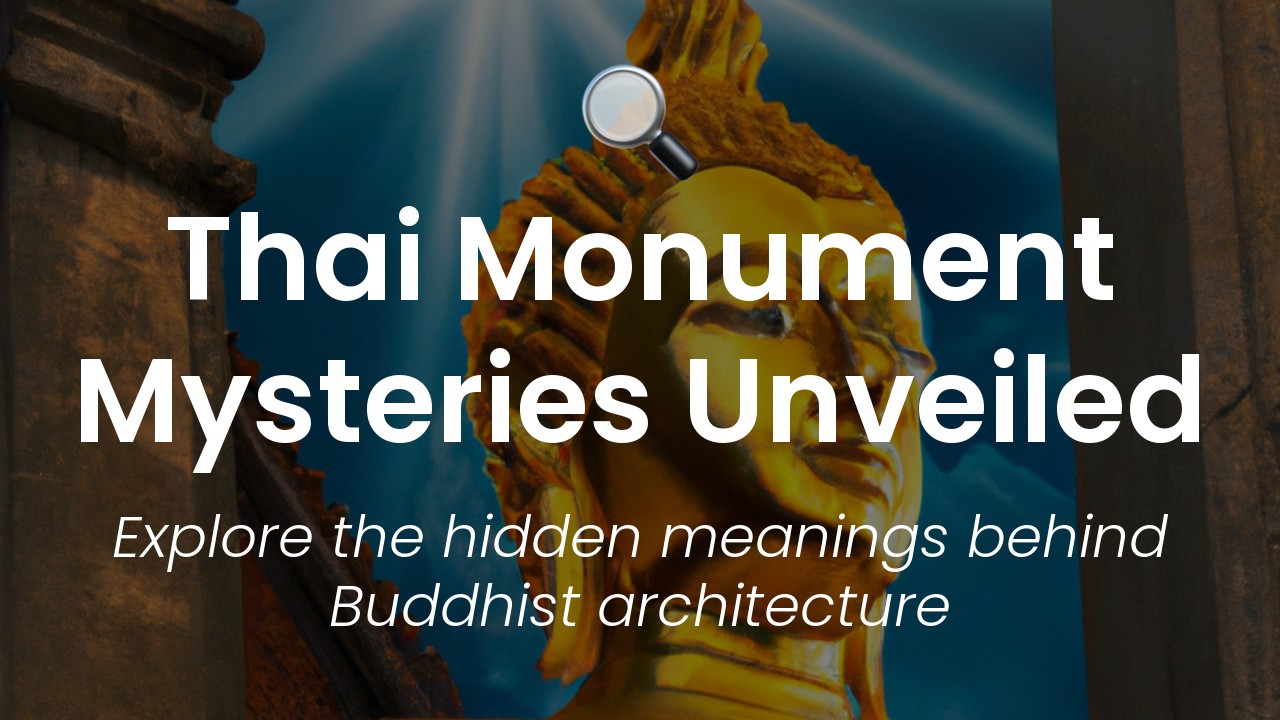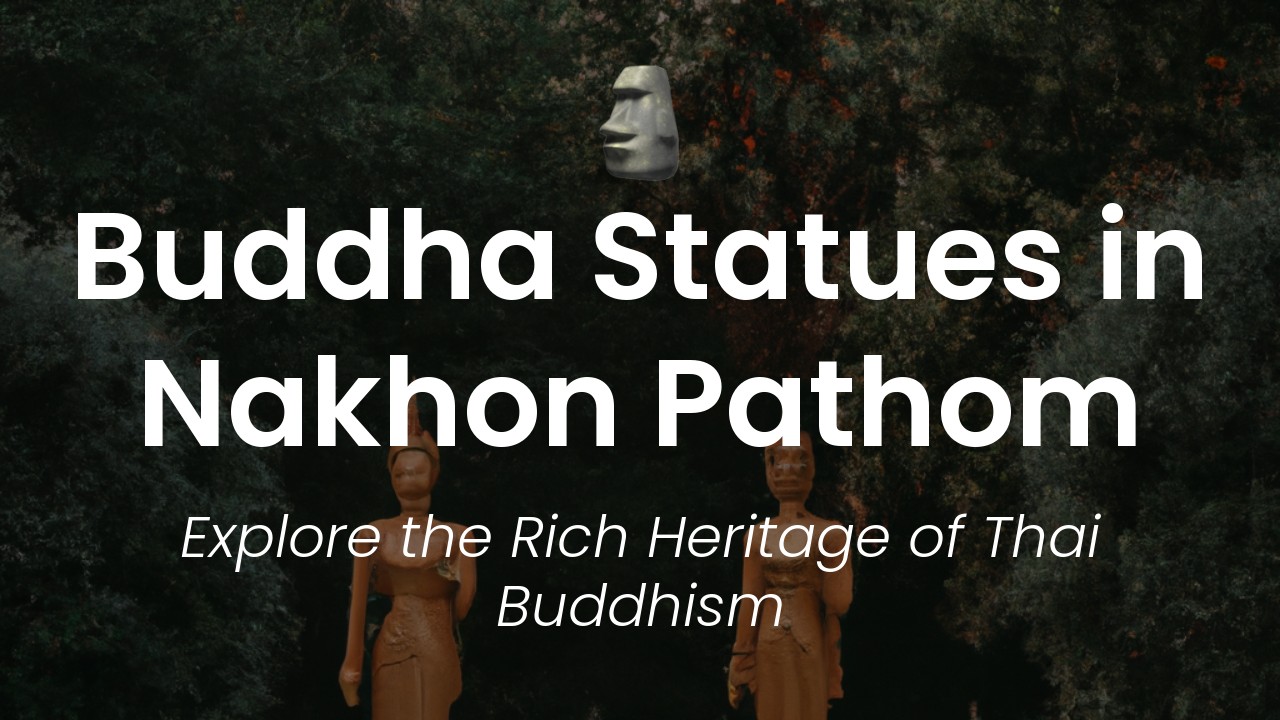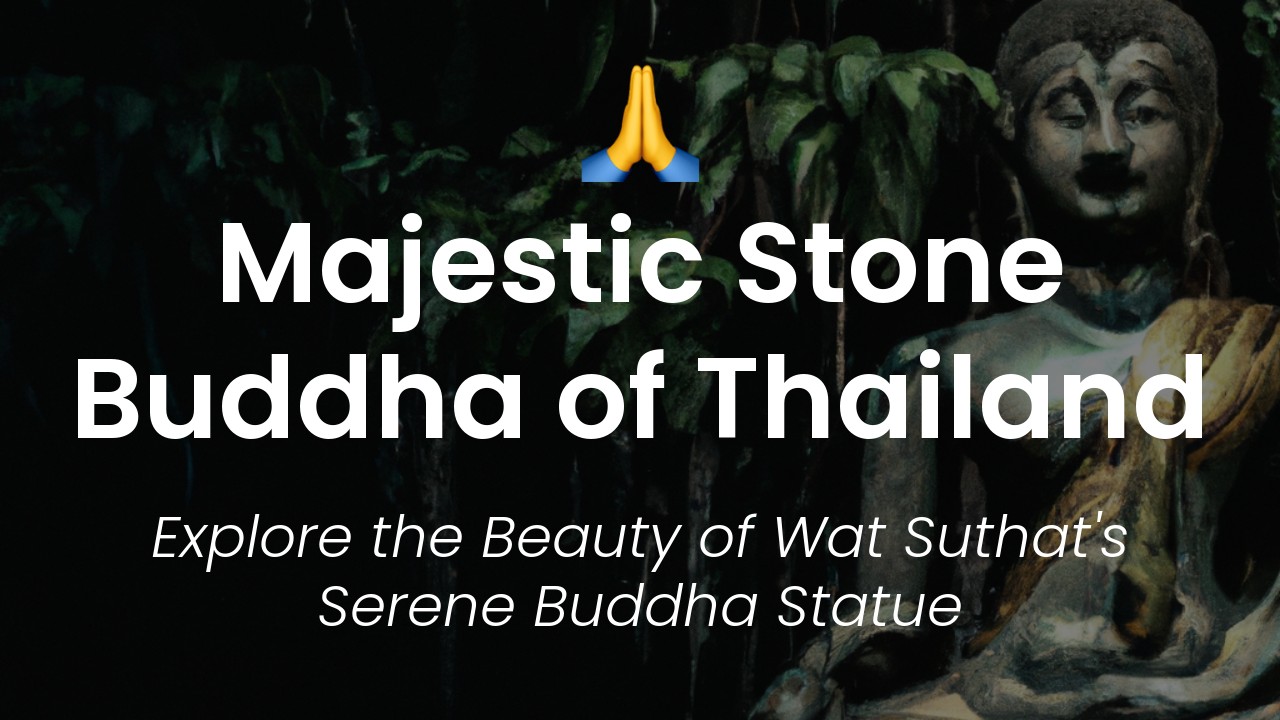Hello everyone! I'm Sirinya, and welcome to my blog. Today, we're going to delve into the fascinating history and story behind one of Thailand's most revered and mysterious cultural objects: the Emerald Buddha.
Located in the heart of Bangkok at the Wat Phra Kaew temple, the Emerald Buddha is a statue of Buddha made of green jadeite (not emerald, despite its name). Although small in size, it's revered as one of Thailand's most important cultural icons and attracts countless visitors every year.
What makes the Emerald Buddha so intriguing is not just its beauty, but also its enigmatic past. Many myths and legends surround its origin, and even experts have been unable to uncover the full history of this incredible work of art. Yet, its significance to Thai culture and Buddhism is undeniable, and the story behind it is truly captivating.
Join me as we journey through history and uncover the mysterious and fascinating story of the Emerald Buddha. From ancient legends and myths to modern-day politics and culture, there's a wealth of knowledge and wonder to be discovered. So sit back, relax, and let's explore together.
Origins of the Emerald Buddha
The Emerald Buddha, or Phra Kaew Morakot in Thai, is one of the most revered and mysterious relics in Thailand. The Buddha statue is made of dark green jadeite, which is not actually an emerald, hence the name. According to legend, the Buddha originated in India and traveled through Sri Lanka and Cambodia before reaching Thailand. Different versions of the story exist, but they all agree that the Buddha arrived in Thailand in the late 14th century during the reign of King Ramkhamhaeng of Sukhothai.
The Buddha statue went through various locations and owners before ending up in the Temple of the Emerald Buddha, or Wat Phra Kaew, in Bangkok. Some sources say that the statue was discovered in a chapel in Chiang Rai in the 15th century, while others claim that it was initially brought to Lampang and then to Chiang Mai, where it was lost and found several times over the centuries. The most plausible version, however, is that the Buddha was brought to Thailand by a monk named Arayawangso in the 1430s and was enshrined in Wat Pa Yia in Chiang Mai. The Buddha remained there until 1552, when the Chiang Mai ruler handed it over to King Bayinnaung of Burma as a tribute. The Burmese king kept the Buddha statue in Pegu for 214 years, during which it changed hands several times due to wars and rebellions. In 1779, the statue was taken to Siam (now Thailand) by King Rama I as a war trophy and was installed in the newly built Wat Phra Kaew in Bangkok.
The Buddha's Journey to Thailand
The journey of the Buddha from India to Thailand is shrouded in mystery and mythology. According to legend, the Buddha statues was originally made in India by a craftsman named Naga Chanuka, who imbued it with supernatural powers. The statue was then lost and rediscovered several times by Indian kings and Brahmins, who recognized its sanctity and tried to keep it safe. At one point, the Buddha was hidden in a stupa in Sri Lanka, where it supposedly remained until the 13th century. In that century, the Javanese king Kertanagara conquered Sri Lanka and took possession of the Buddha, which he brought to Java. There, the Buddha stayed until the 14th century, when the Thai ruler Phaya Lithai took it from the Cambodian king and enshrined it in Sukhothai.
The story of the Buddha's travels is not entirely accurate, of course, and many details remain unknown or disputed. Nevertheless, the legend reflects the reverence and fascination that the Buddha statue has inspired over the centuries, as well as the sense of mystery and otherworldliness that surrounds it.
The Emerald Buddha's Mysterious Powers
The Emerald Buddha is not only a beautiful and rare artifact, but also a powerful symbol of Thai kingship and Buddhism. According to Thai beliefs, the Buddha statue has protective and auspicious powers that have helped protect the country and its people. The statue is associated with the goddess of mercy, Guanyin, and the Hindu god Indra, both of whom are said to have blessed it and bestowed upon it the ability to bring rain, prosperity, and victory in battle.
The Buddha's enigmatic qualities have also inspired various legends and superstitions. For instance, it is said that the statue changes color and position depending on its surroundings and the behavior of those who approach it. The Buddha is also believed to have caused or prevented natural disasters, such as earthquakes or floods, and to have influenced the outcome of wars and political intrigues. These stories may seem fanciful or implausible, but they show the extent to which the Emerald Buddha has captured the imagination of Thais and foreigners alike.
Rituals and Customs Surrounding the Buddha
Given the importance and mystery of the Emerald Buddha, it is not surprising that various rituals and customs have developed around it. The Buddha is usually kept inside a glass case in the main hall of Wat Phra Kaew, and visitors are not allowed to touch or photograph it. However, they can pay respect to the Buddha by kneeling or bowing three times, pressing their forehead to the ground, and making offerings of flowers, incense, and candles. The Buddha statue is changed three times a year, in a ceremony known as the "Changing of the Robe," which is presided over by the king or a high-ranking monk. During this ceremony, the old robe of the Buddha is replaced with a new one, which is woven from pure gold thread and covered with sacred symbols. The changing of the robe is a reminder of the impermanence of all things and the need to respect and preserve the past and the present.
The Temple of the Emerald Buddha
The Temple of the Emerald Buddha, or Wat Phra Kaew, is a magnificent complex of buildings and gardens that reflect the grandeur and beauty of Thai culture and architecture. The temple was built in 1782 by King Rama I to commemorate his accession to the throne and to enshrine the Emerald Buddha. The temple is located in the Old City of Bangkok, in the precincts of the Grand Palace, and is one of the most visited and photographed sites in Thailand.
The temple comprises several buildings, each of which has a specific function and design. The main hall, or Ubosot, is where the Emerald Buddha is kept and where rituals and ceremonies are conducted. The hall has a multi-tiered roof and intricate murals depicting the life of the Buddha and the Jataka tales. The hall is surrounded by a cloistered gallery, or Phra Rabiang, where 112 stone statues of mythical creatures stand guard. The gallery leads to the cloistered terrace, or Phra Mondop, where the Tripitaka, the sacred texts of Buddhism, are enshrined. The terrace is decorated with gold leaf and stucco reliefs depicting celestial beings and Buddhist scenes.
The temple also has several other buildings and structures, such as the Chakri Maha Prasat, the Royal Pantheon, the Royal Mausoleum, and the Golden Stupa. Each of these buildings reflects different aspects of Thai history and culture, and each has its own style and significance.
Theft, Re-location, and Restoration
The history of the Emerald Buddha is not without drama and controversy. Over the centuries, the statue has been stolen, relocated, and damaged several times. In 1767, the Burmese invaded and sacked Ayutthaya, the former capital of Thailand, and carried away the Buddha statue along with other treasures. The Burmese kept the Buddha for several years, until it was recovered by the Thai king Taksin and placed in his palace in Thonburi. When the new capital was established in Bangkok, the Buddha was moved to Wat Phra Kaew, where it has remained ever since.
In 1784, a fire broke out in Wat Phra Kaew and damaged the upper part of the main hall and the roof. The hall was subsequently restored by King Rama I, who also commissioned the construction of several other buildings in the temple compound. In 1903, the roof of the main hall was again destroyed by a fire, but was restored by King Chulalongkorn. In 1960, the temple underwent a major renovation that included the installation of air-conditioning and electric lighting, as well as the restoration of the murals and the furniture.
Impact on Thai Culture and Religion
The Emerald Buddha is not only a significant religious and cultural artifact, but also a source of national pride and identity for the Thai people. The Buddha symbolizes the unity and resilience of the nation, as well as the continuity of its traditions and values. The temple of the Emerald Buddha is a pilgrimage site for Buddhists from all over the world, as well as a tourist attraction that generates revenue and employment for the local economy.
The Emerald Buddha has also inspired and influenced various aspects of Thai art, literature, and philosophy. Traditional Thai paintings often depict scenes from the Jataka tales or from the life of the Buddha, while traditional Thai music and dance reflect the grace and spirituality of Buddhist rituals. Thai poetry and prose often express the love and devotion that the Buddha inspires in the hearts of Thais, as well as the gratitude and respect that they have for their heritage and their king.
In conclusion, the story of the Emerald Buddha is both enigmatic and fascinating, reflecting the richness and complexity of Thai history and culture. The Buddha statue is not only a rare and beautiful artifact, but also a powerful symbol of kingship and Buddhism that has inspired awe and admiration for centuries. The temple of the Emerald Buddha is a place of pilgrimage and contemplation that reflects the spiritual and aesthetic values of Thai culture, as well as the resilience and creativity of its people.

